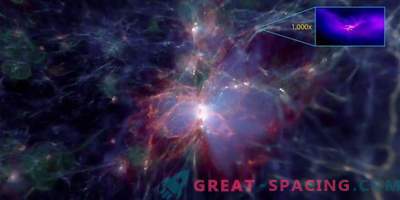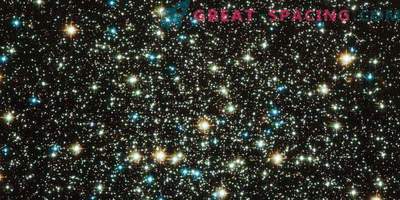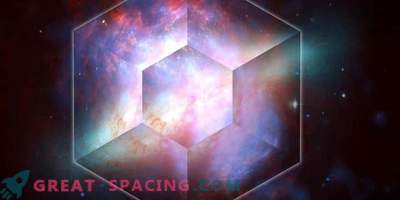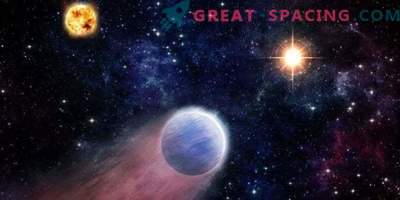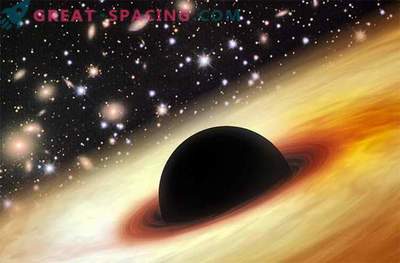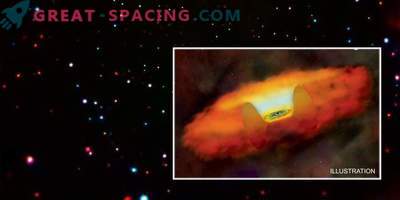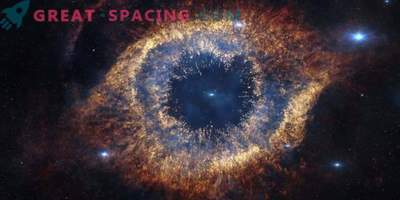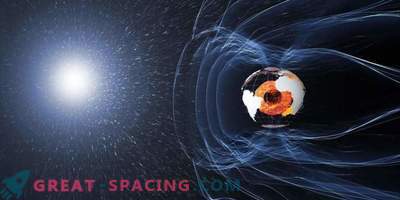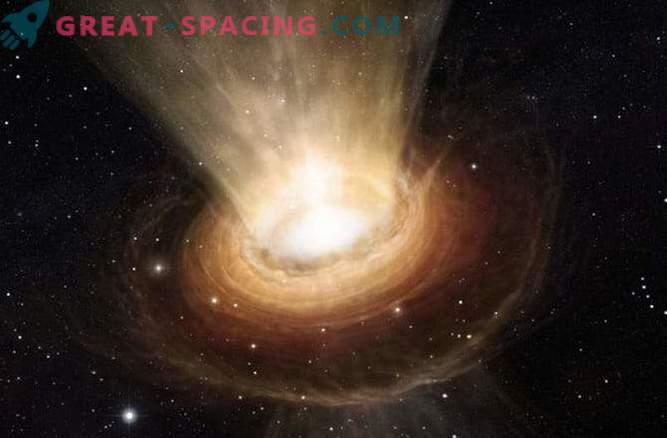
If we just assume that black holes rule the universe, they could “turn on” habitable planets such as the Earth, allowing them to support complex life forms.
This conclusion comes after studying the work of astrophysicist Paul Mason, who investigated the role of high-energy superparticles of black holes and exploded stars and their influence on the appearance of habitable planets.
Until the birth of life on the planet, Earth literally bathed in deadly radiation emanating from the young, more red-hot Sun, as well as in a huge stream of energy particles, the so-called cosmic rays, which were carried by exploding stars and giant black holes in the centers of galaxies. At some point, this was enough for the birth of life on Earth (and on any planet like this in the Universe).
“It took some time for the universe to reduce the cosmic ray density and frequency of negative events so that life forms could adapt,” Mason told Discovery News. Paul Mason is a professor at the State University of New Mexico at Las Cruces. On Wednesday, he presented his work at a meeting of the American Astronomical Society in Kissimmee Florida.
These negative events include flashes of supernova (an explosion occurring during the death of very large or short-lived stars), which were more frequent in the early stages of the Universe. Other “bad” events were radiation storms that blew in from the giant black holes located in the centers of galaxies as they absorbed matter. Such a frenzy during the “feast” and the harsh, all killing radiation that holes emitted were also more common in the past, as astronomers found out, watching more distant, and, accordingly, older galaxies. The problem of life at the stage of the early Universe is explained by the fact that everything was much closer to each other. The little early universe was crammed with deadly cosmic rays. It took billions of years of expansion of the universe to make it all more sparse.
“This means that the expansion of the universe is important for life,” says Mason, considering the influence of cosmic rays on the universe.
Ultimately, even the remnants of supernova stars helped life to reflect the cosmic rays. Dying stars are real factories that create oxygen and nitrogen, which form the basis of our atmosphere. She, in turn, protects us from cosmic rays, plowing expanses of the Galaxy.
Mason's theory of cosmic rays fits into the general theory of the development of the universe. However, there are many questions that she does not answer. For example, did giant black holes necessarily destroy their own galaxies using cosmic rays?
According to the physicist Dimitra Atri of the Blue Marble Science Institute in Seattle, the theory that giant black holes emit high-energy cosmic rays has not been fully confirmed.
It also remains to ask what dose of cosmic radiation is truly life threatening.
“A high dose of cosmic radiation can really kill anything,” confirms Atri. “But at the same time, it can cause mutations and lead to the evolution and emergence of many other species.” The lethal dose for humans is not necessarily such for other organisms, he adds. It can be assumed that there are life forms, such as bacteria, for which radiation is a favorable factor, and we could find them on Earth. In this case, the cosmic rays will not be such a key factor for the origin of life.
“There is a huge variety of life forms on Earth,” adds Atri. “If we talk about habitability, then it’s more like water.”
And what about the fact that the Earth is one of the first habitable planets in the universe? According to Paul Mason, this is not known for certain. But right now this topic is very fertile for the emergence of various theories, hypotheses and reflections.


